Oregano is a versatile herb that has found its way into the hearts and kitchens of people around the world. Known for its robust flavor and aromatic presence, it’s a staple in Mediterranean cuisine, famously sprinkled over pizzas, pastas, and integrated into a myriad of sauces and marinades. But oregano’s appeal goes beyond its culinary uses. This herb, with its tiny leaves packed with flavor, also boasts a rich history of medicinal use. Ancient civilizations revered oregano for its healing properties, utilizing it to treat ailments ranging from respiratory tract disorders to gastrointestinal issues.
Today, oregano continues to be celebrated not only for the depth it adds to dishes but also for its health benefits, including its antioxidant and antimicrobial qualities. Whether grown in a lush garden or perched on a sunny windowsill, oregano plants offer a world of flavor and natural remedy, making them a beloved choice among gardeners and cooks alike. This article will look at the history of oregano, its uses in cooking and medicine, and how it can benefit your health.
What Is Oregano?
Oregano is an aromatic herb used for centuries in cooking and herbal medicine. It’s native to warm climates such as the Mediterranean but can also grow wild in many parts of North America.
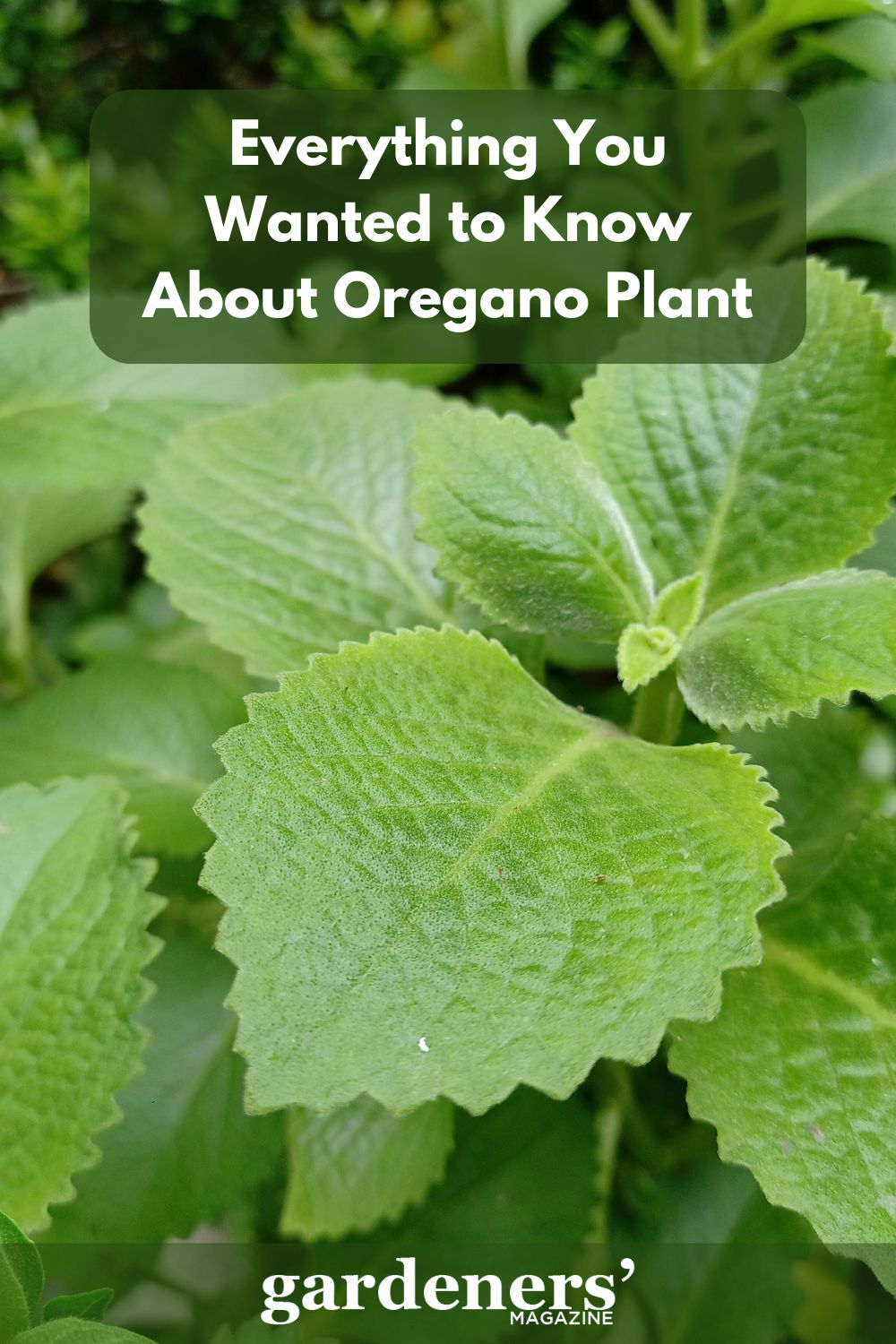
Botanical Classification:
Oregano belongs to the mint family, Lamiaceae, which includes many other aromatic herbs like basil, mint, lavender, sage, and thyme. Its botanical name is Origanum vulgare. This family is characterized by plants with square stems, opposite leaves, and often, fragrant foliage. Being part of such a diverse family means oregano shares many growth habits and care requirements with its relatives, making it a familiar plant to grow for those who have experience with other Lamiaceae members.
Description of Oregano:
Oregano is a perennial herb with small, oval-shaped leaves that are dark green and covered in fine hairs. The plant grows about two feet tall and has white flowers that bloom from June to September. Oregano has a strong aroma and flavor due to its high concentration of carvacrol and thymol, two oils responsible for its distinct taste.
The oregano leaves are dark green and have a slightly bitter taste. Oregano is most commonly used in Italian, Spanish, and Greek cooking. It’s often added to vinegars, sauces, marinades, soups, and stews just like cilantro plant. Dried oregano can also be used to make tea, which is popular for its health benefits.
History:
The name Oregano comes from the Greek words oros (mountain) and ganos (joy), fitting as the herb grows wild on mountainsides. It has been used since ancient times in Mediterranean regions, particularly Greece and Italy, where it has long been a staple of Italian cuisine. Oregano was also valued for its medicinal properties; Hippocrates was known to use oregano for treating coughs and colds.
Types of Oregano:
There are two main types of oregano, Greek Oregano (Origanum vulgare) and Mexican Oregano (Lippia graveolens). Greek oregano is the most common variety and has a strong flavor with a hint of sweetness. It is often used in Mediterranean dishes like pizza and pasta sauces. Mexican oregano has a slightly different flavor, with more of an earthy taste. It is used mainly in Mexican and South American dishes such as tacos and enchiladas.
Identifying your Oregano Plant
An oregano plant is easily recognizable by its features:
- Leaves: Oregano has small, oval to round, slightly hairy leaves that can range in color from dark green to gray-green. The leaves are often more concentrated at the top of the plant, giving it a bushy appearance.
- Stems: The stems are square, a common trait in the mint family, and can become woody as the plant matures.
- Flowers: Oregano blooms in late summer with tiny, white to pink or purple flowers that form in clusters. These flowers are not only attractive but also attract beneficial pollinators to the garden.
- Height and Spread: A healthy oregano plant can grow up to 2 feet tall and spread about 18 inches wide. Its growth habit makes it suitable for ground cover or as a part of a herb garden border.
Understanding these characteristics will help you identify oregano in your garden or when selecting plants for purchase. Whether you’re growing oregano for its culinary uses or its ornamental appeal, recognizing these features ensures you’re working with the right herb
Cultivation of Oregano
Oregano can be grown both indoors and outdoors. It is best to plant oregano in well-drained soil and an area with full sun. It should also be planted in an area with plenty of air circulation to prevent mold from growing on the leaves. Oregano requires little water; water if the soil becomes dry. When the plant begins to flower, it should be cut back to encourage new growth.
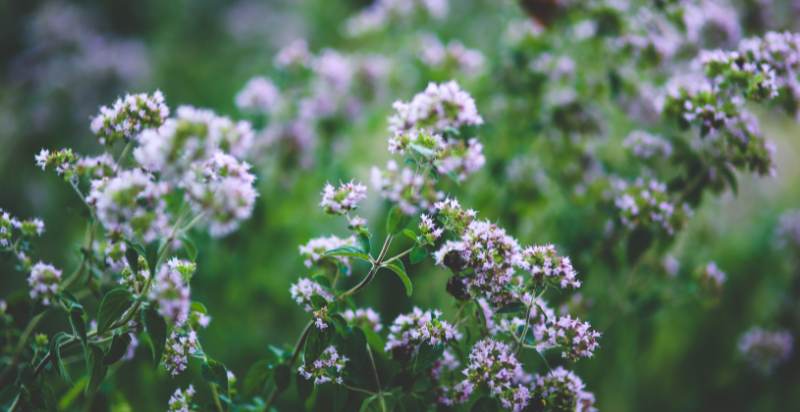
How to Plant Oregano
Oregano grows easily in most climates and prefers well-drained soil with plenty of sunshine. In this section we’ll discuss how to plant oregano from seed or cutting, when to harvest it, and how to dry it for long-term use.
Planting from Seed
The best time to start growing oregano from seed indoors is about eight weeks before the last frost date for your area so that you can transplant it outdoors when the weather is right. Start by filling small pots with well-draining potting soil and wetting it thoroughly.
Then sprinkle oregano seeds over the surface, adding more if necessary to ensure they’re evenly spaced. Cover lightly with additional soil and wet again. Place the pots in a sunny location, such as on a windowsill or in a greenhouse, and keep them moist but not soggy for about two weeks until germination occurs.
Transplanting
Once you have at least four inches tall seedlings, it’s time to transplant them into your garden bed or container of choice. Dig holes that are twice as deep and twice as wide as the size of each plant and place them in full sun. Firmly pack the soil around each plant and water thoroughly.
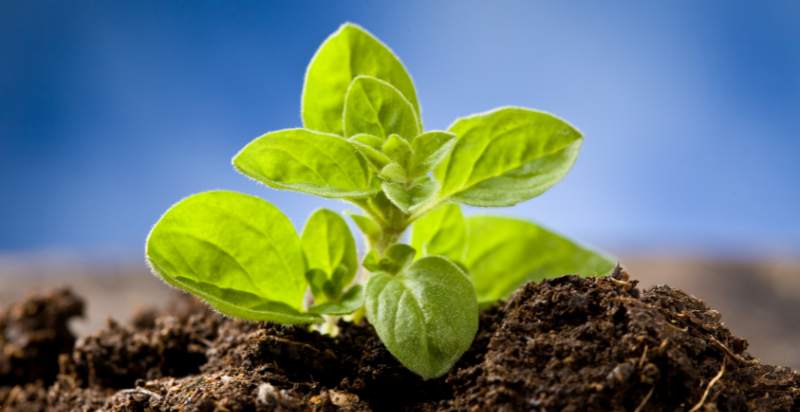
Watering
Oregano requires regular watering to grow its best. Water your oregano plants every few days or when the top inch of the soil feels dry. Do not overwater, as this can cause rot and disease in the roots.
Fertilizing
Fertilize your oregano only once in spring with a balanced fertilizer such as 10-10-10. This will ensure that your herbs get the nutrients they need to thrive without overfeeding them, which can cause damage to their delicate leaves.
Harvesting
When you’re ready to harvest your oregano, wait until its stems are at least six inches long, then snip them off with scissors. You can also leave some stems on the plant to ensure that it continues to grow and remain healthy.
Drying
The best way to preserve your oregano is by drying it. To do this, tie several stems together at the base and hang them upside down in a cool, dry place away from direct sunlight until they’re completely dry. Then store the dried herbs in an airtight container in a dark cupboard or pantry for up to one year.
Growing Oregano in Pots
Growing oregano in pots is a fantastic way to keep this flavorful herb close at hand, whether you’re short on garden space or simply prefer the convenience of container gardening. Oregano, with its drought-tolerant and hardy nature, thrives in containers, making it an ideal choice for both novice and experienced gardeners. Here are some tips to ensure your potted oregano plants flourish:
- Choose the Right Pot: Oregano doesn’t require a deep pot, but adequate drainage is crucial. Select a container with drainage holes to prevent waterlogging, which can lead to root rot.
- Soil and Fertilization: Use a well-draining potting mix designed for herbs or vegetables. Oregano prefers a slightly alkaline soil pH. While oregano isn’t a heavy feeder, incorporating a slow-release organic fertilizer at planting time can support healthy growth.
- Sunlight: Oregano loves the sun. Place your pots in a location where the plant can receive at least 6 to 8 hours of direct sunlight daily. If you’re growing oregano indoors, a south-facing window is ideal, or consider using grow lights
How to Care for an Oregano Plant
The oregano plant is a hardy, drought-tolerant perennial herb that can be grown in many climates. It’s an easy herb to care for and adds flavor and color to your garden. Here are some tips on how to take care of your oregano plant:
- Plant in Well-Drained Soil: Oregano prefers well-drained soil with a pH between 6.0 and 7.5; if the soil is too damp, it may cause root rot. Add plenty of organic matter, such as compost or manure, when planting oregano in the garden bed; this will help the soil retain moisture without staying soggy.
- Give Plenty of Sunlight: Oregano loves the sun and should be planted in an area that receives at least 6-8 hours of direct sunlight daily. If you’re growing oregano indoors, a south-facing window is ideal.
- Water Regularly: While oregano is drought tolerant and does not require frequent watering, it’s important to keep the soil evenly moist but not soggy. When deciding how much to water your plant, stick your finger into the soil; if it feels dry up to your first knuckle, it’s time to give the plant a drink. Water until it runs out of the bottom of the pot or irrigation tray; this will ensure that all the roots get an adequate water supply.
- Feed Every Month or So: Most oregano plants can do with general-purpose fertilizer once a month, but if your plant is looking a bit pale or isn’t growing well, you can give it an extra boost of nutrients with a liquid fertilizer. Be sure to follow the directions on the package carefully; too much fertilizer can burn the roots and damage your plant.
- Prune as Necessary: Keep your oregano plant tidy by pruning off any dead or dying branches and any straggly stems that don’t fit in with the plant’s overall shape. This will also help keep it healthy and encourage new growth.
Following these tips can keep your oregano plant happy and healthy for many years. Enjoy the fragrant, flavorful leaves in all of your favorite recipes!
Uses and Benefits
Oregano is a highly versatile herb that’s used for a wide range of purposes, both culinary and medicinal, making it a staple in kitchens and natural remedy kits worldwide. Here’s a closer look at what oregano is used for:
Culinary Uses:
Oregano is widely used in Italian cuisine as an ingredient in pizza sauce, tomato sauce, pasta dishes, and roasted vegetables. It can also be used as a seasoning for grilled meats or added to salad dressings or marinades. Additionally, it can be used fresh or dried when cooking soups and stews.
Nutritional Benefits:
In addition to its culinary and medicinal uses, oregano also has many health benefits due to its high levels of vitamins and minerals such as iron, calcium, magnesium, vitamin A, and vitamin C. The plant’s compounds may help reduce inflammation, lower blood sugar levels and reduce cholesterol. Oregano also contains compounds that may have anti-cancer properties and can help to protect against cancer cells.
Preventions from Pests and Diseases
- Inspect your oregano plant regularly for signs of pests and diseases, such as aphids, whiteflies, rust fungi, or powdery mildew.
- Remove any affected leaves with scissors or pruning shears and dispose of them in the garbage.
- If the problem persists, treat your oregano plant with insecticidal soap or fungicide according to the instructions on the package.
- Keep your oregano plant well-watered and mulch around it to help prevent problems from occurring in the first place.
- Avoid planting different varieties of herbs together; some can be susceptible to similar pests and diseases, so it’s best to keep them separate.
These steps will help keep your oregano plant healthy and free of pests and diseases. Enjoy the delicious flavor it adds to all your favorite dishes!
How to Harvest Oregano?
- Harvest oregano when the leaves are large enough to use, usually about two months after planting.
- Cut off individual stems with scissors or pruning shears just above a leaf joint just like Rosemary herb .
- Collect the cuttings in a basket and place them in the shade until ready to use or store them for later use.
- The flavor of dried oregano is more intense than fresh; spread out your harvested oregano on a baking sheet lined with parchment paper and let dry at room temperature for several days before storing it in an airtight container away from heat and sunlight.
Harvesting your oregano is an economical way to enjoy its delicious flavor year-round. Bon appetit!
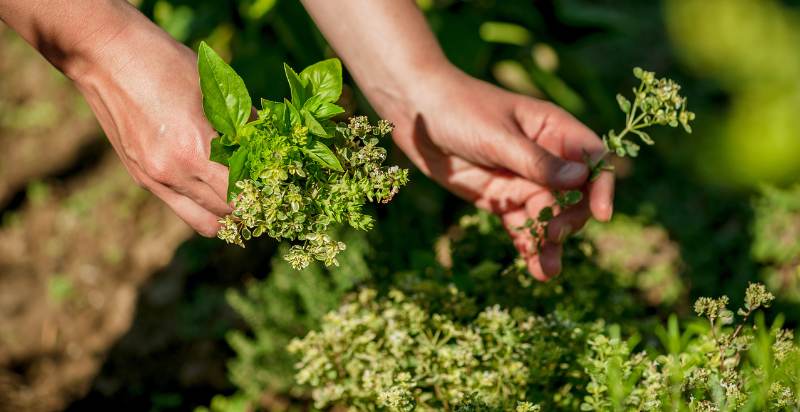
How To Store Oregano?
- Dried oregano should be stored in an airtight container away from heat and sunlight for up to a year.
- To prolong the shelf life of fresh oregano, it’s best to keep it in the refrigerator; wrap it tightly in plastic wrap or place it in a Ziploc bag with some water and store it in the crisper drawer for up to two weeks.
- If you have too much oregano to use before its expiration date, you can also freeze it; spread out washed leaves on a baking sheet lined with parchment paper and place in the freezer until frozen solid, then transfer to an airtight container or freezer-safe bag and store for up to 6 months.
Properly stored oregano will stay fresh and flavorful for many months so that you can enjoy its zesty flavor any time of year.
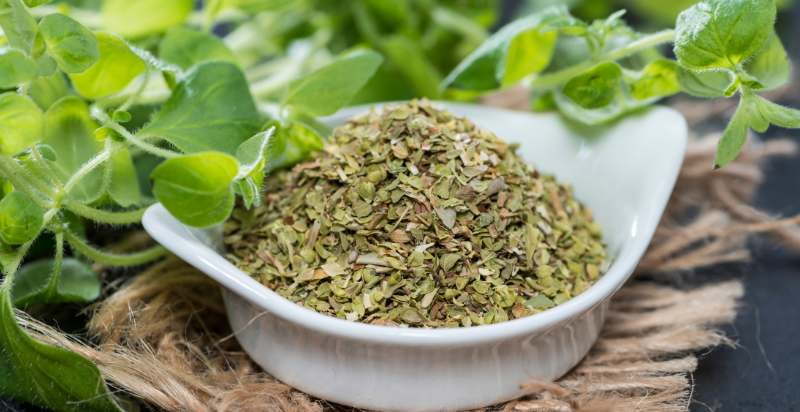
Where to Buy Oregano Plants or Seeds
Finding oregano plants or seeds for sale is relatively easy, given the herb’s popularity among gardeners and cooks alike. Here are some tips on where to find them:
Local Garden Centers and Nurseries
Start by visiting your local garden centers or nurseries. These places often carry a variety of herb plants, including different types of oregano, during the planting season. Staff can also provide valuable advice on caring for your oregano plants.
Online Garden Retailers and Seed Companies
Many reputable online retailers and seed companies offer a wide selection of oregano seeds and sometimes live plants. Websites like Burpee, Park Seed, and Johnny’s Selected Seeds are great places to start. They often provide detailed descriptions and growing instructions for each variety.
Farmers’ Markets
Local farmers’ markets can be a good source of oregano plants, especially if you’re looking for varieties well-suited to your local climate. Plus, buying from local growers supports the community.
Specialty Herb Gardens
Some specialty herb nurseries or gardens focus on culinary and medicinal herbs. These can be excellent places to find unique or heirloom varieties of oregano that might not be available elsewhere.
Online Marketplaces
Platforms like Etsy or eBay may have sellers offering oregano seeds or plants. Ensure to check seller reviews and that the plant or seeds are specifically labeled for growing (not just for culinary use).
When purchasing oregano plants or seeds, consider the specific variety you want, such as Greek oregano (Origanum vulgare var. hirtum), Italian oregano, or even more exotic types like Cuban oregano (Plectranthus amboinicus), which is actually a different species but used similarly in cooking. Each variety has its own unique flavor profile and growth habits, so choose based on your culinary preferences and gardening space.
Potential Risk from Oregano:
- Oregano can be toxic to some animals, including cats and dogs, so it’s important to keep it out of reach of pets.
- Oregano oil may cause skin irritation in some individuals; do a patch test on the inside of your elbow before using oregano topically.
- Oregano is not recommended for consumption during pregnancy as its high levels of thymol can cause uterine contractions, which could lead to preterm labor.
- Consuming large amounts of oregano can have laxative effects due to its volatile oils, so it’s best to use it in moderation if you are prone to digestive issues.
As with any herb, it’s important to be aware of potential risks and caution when consuming oregano. Enjoy its delicious flavor in moderation, and always store it safely away from pets! 🙂
Conclusion:
Diving into the world of gardening with an oregano plant is not just about adding a dash of flavor to your dishes; it’s about embracing a herb that brings both culinary delight and medicinal benefits to your doorstep. I encourage you to start your own oregano garden, regardless of the space you have. Whether it’s a sprawling backyard or a sunny windowsill, oregano thrives with minimal care, offering a bounty of uses from your kitchen to your medicine cabinet. I’d love to hear about your gardening adventures or any questions you might have about growing oregano. Share your stories and let’s cultivate a community of herb enthusiasts together.
Happy gardening!
- Everything You Wanted to Know About Red Tamarillos - June 2, 2025
- A Guide to Tulips: Everything You Need to Know & More… - June 2, 2025
- Guanabana: Description, Flavor, Benefits, And Uses - May 27, 2025

13 thoughts on “What Is Oregano? Tips for Planting, Growing and Using the Herb”
Comments are closed.